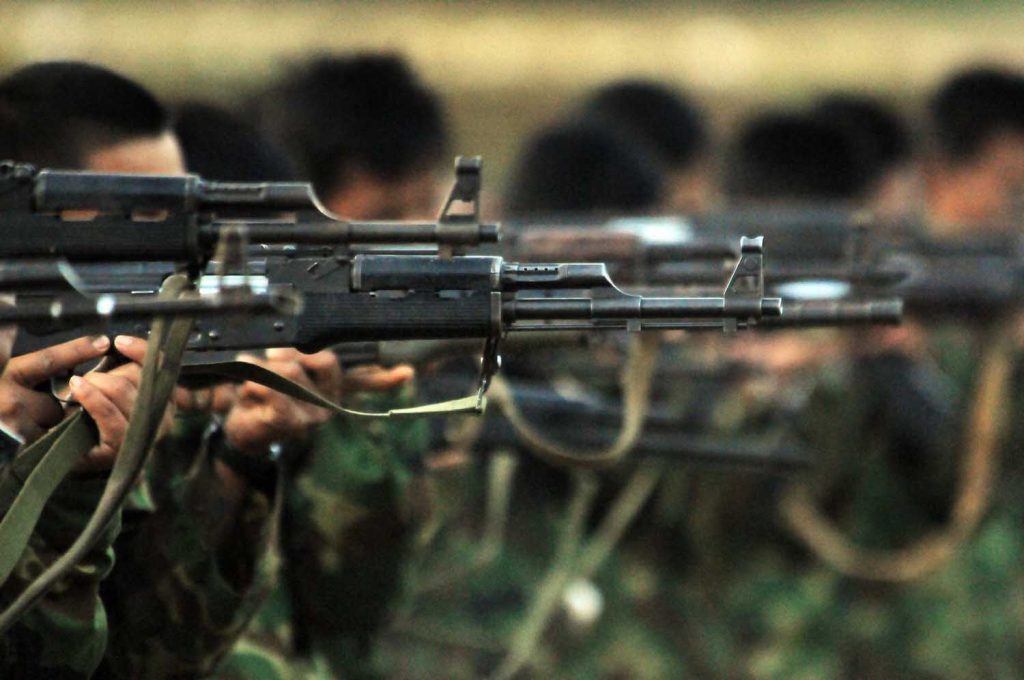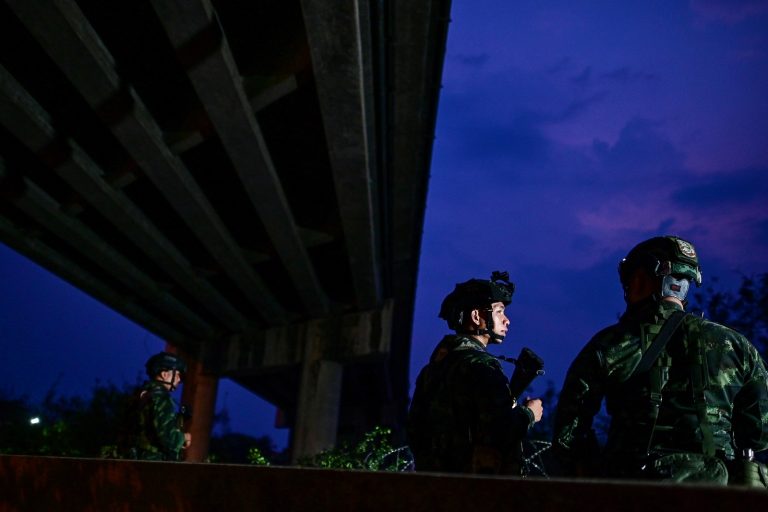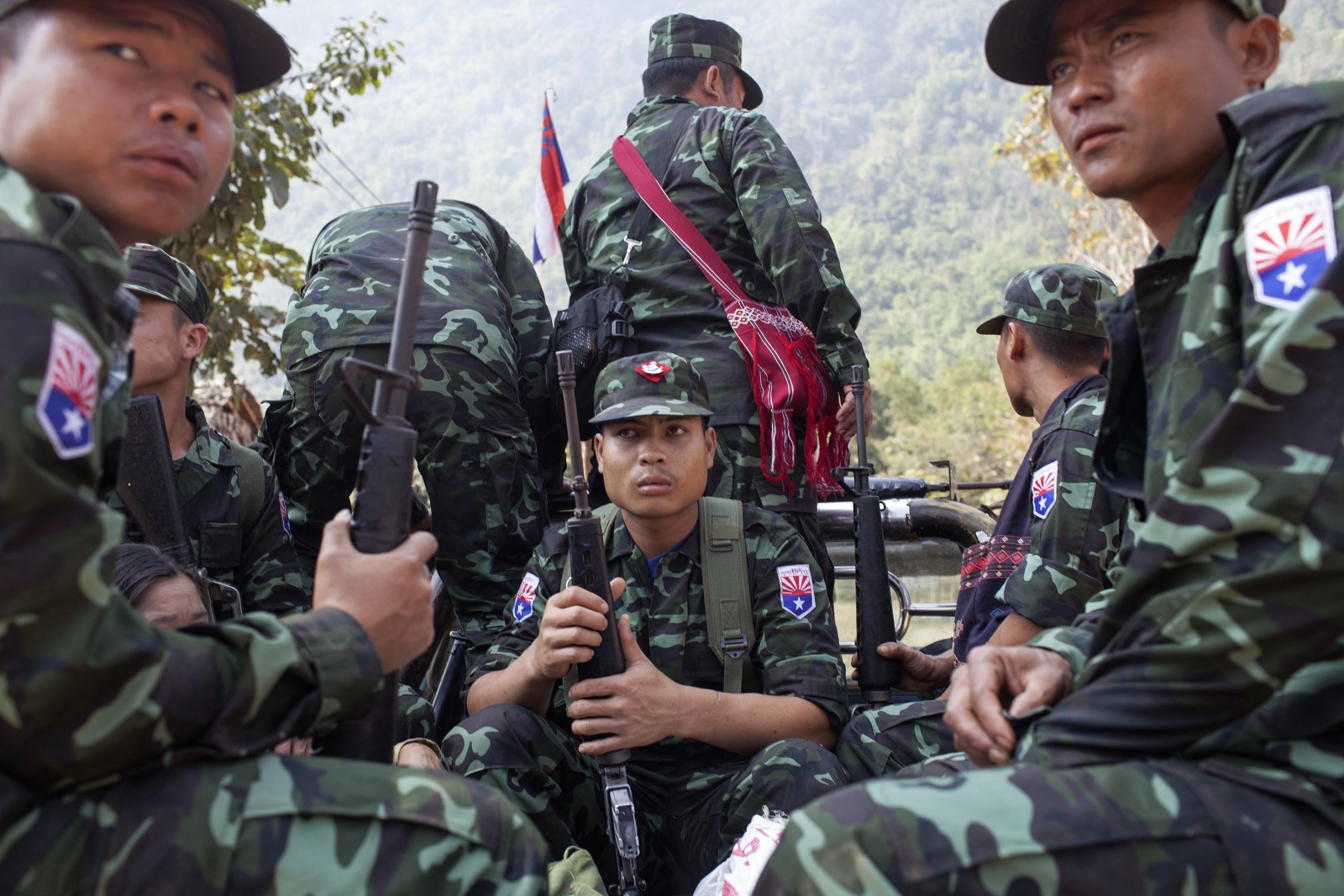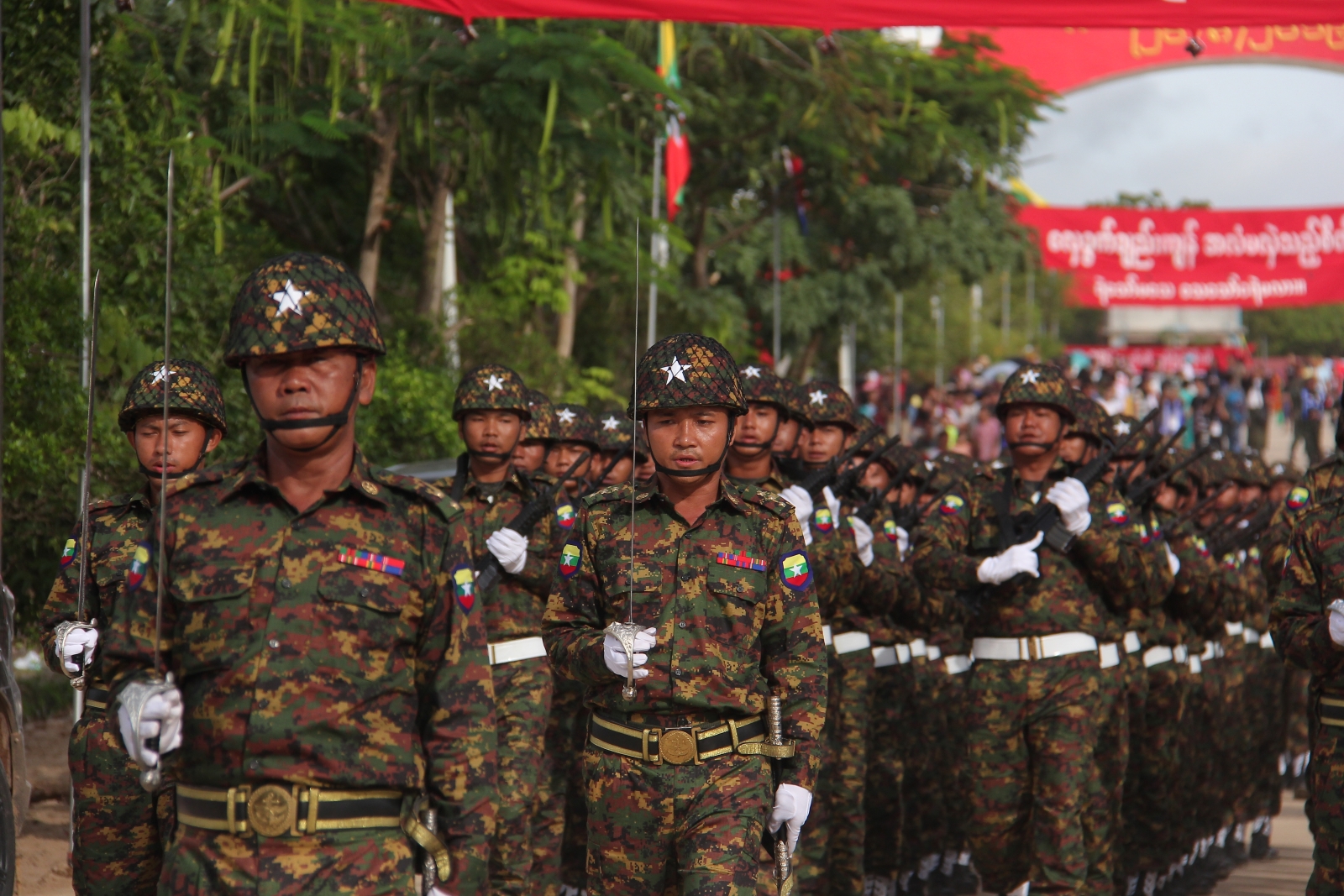Pro-military Facebook accounts are seeking to drive a wedge between ethnic armed groups and civilian resistance with disinformation, but are struggling to break the unity of the anti-coup opposition.
By FRONTIER
As pro-democracy activists embrace armed revolution to remove the Myanmar military from power, alliances with ethnic armed groups have emerged as key to any potential long-term success. Groups like the Kachin Independence Army, Karenni Army and Karen National Liberation Army have sheltered dissidents, trained would-be revolutionaries, and even fought alongside civilian militias against the junta.
Reflecting the importance of these partnerships, pro-military social media users have responded by spreading disinformation in an apparent attempt to cause rifts between the groups or discourage other prospective trainees from entering ethnic-controlled territory. Many Facebook posts viewed by Frontier have accused ethnic armed organisations of killing or in some way mistreating civilian trainees. The posts provide no evidence to support the allegations, and both People’s Defence Forces trained by armed groups and the armed groups themselves have denied the incidents.
A wave of disinformation
The posts began proliferating around the same time in late June, suggesting a coordinated campaign.
On June 28, a Facebook user who claims to be a doctor in Mandalay posted that members of the overthrown National League for Democracy had asked the military to help rescue “Gen Z” members – a term many use to refer to protesters and members of newly formed armed resistance groups regardless of their actual age – who were trying to flee from training camps in KIA territory.
According to Tu Hkawng, an ethnic Kachin member of the parallel National Unity Government, this post was later also shared by a pro-military social media influencer named Shwe Yupar Oo. Screenshots posted by Tu Hkawng show that Shwe Yupar Oo’s post received over 5,200 reactions.
Frontier was unable to independently verify these posts, as the Shwe Yupar Oo account has since been deleted. But a new account under the same name was created in early July and encouraged followers to join a Telegram channel, where the person controlling the account continues to post disinformation, including claims of KIA members killing PDF trainees.
On June 27, a video of soldiers in the woods beating civilians to death began circulating online. Pro-military users claimed it showed members of the Karen National Defence Organisation killing PDF trainees.
The KNDO, which is part of the Karen National Union, has been accused of massacring construction workers in late May and early June; it did not deny the killings, but claimed they were Tatmadaw soldiers disguised as construction workers. The KNU is investigating the incident.
This video was also shared by the Shwe Yupar Oo account, according to Tu Hkawng’s Facebook post. Frontier could not verify the authenticity of the video, or the identity of either the perpetrators or victims.
Also on June 27, a user named Kwee Kyaw posted that the KNDO killed three civilian fighters and the KIA killed 15. The post received over 1,100 reactions and was later copied and pasted by other pro-military users, like Hnin Maung, who has nearly 5,000 followers and often shares content from the ultra-nationalist Myanmar National Post.
Another post, by a pro-military user with more than 10,000 followers, claimed on June 29 that there was “video evidence” that Gen Z members are being killed by the KNU and KIA, but did not link to any video.
“They worshiped NUG and CRPH as gods. They danced when the media promoted them. Now that they are being brutally killed in the jungle, what do you see NUG saying?” he wrote, questioning why the media and the Assistance Association for Political Prisoners did not report these deaths. This post received over 1,400 reactions and was shared more than 500 times.
These claims have also been shared in a closed pro-military group called National Force, which has over 31,000 members. On June 30, a member named Kal Gyin repeated the unsubstantiated claims of ethnic armed groups killing trainees.
While state media has not yet adopted these narratives, it urges youth who have gone to ethnic-controlled areas to return home. The notice, which is posted in Global New Light of Myanmar nearly every day, notes that some people have fled to ethnic rebel territory due to “incitements and intimidation” by the NLD and its “extremist followers”. It says these youths “face no security guarantee” and “wish to return to their native lands”.
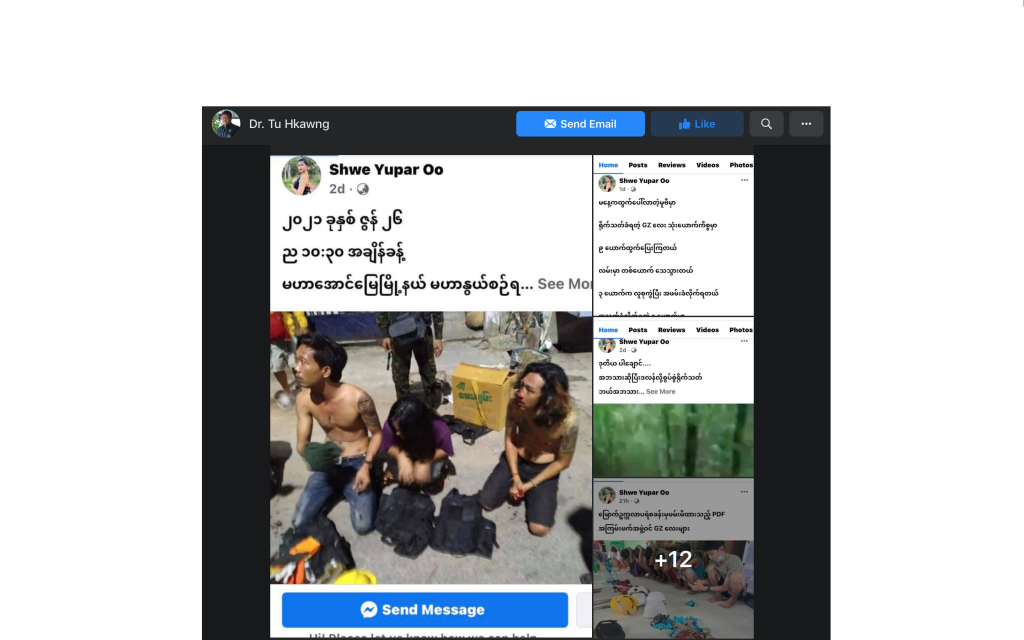
‘A unity that has never been achieved before’
A spokesperson for the Mandalay PDF said that no civilian trainees had been killed or mistreated by ethnic armed groups, and accused the military and its supporters of trying to cause a “blood feud” between the two sides.
“The young people and the EAOs have a unity that has never been achieved before,” he said, explaining that the time spent with ethnic armed groups has led them to “understand each other more and more, overcoming difficulties together, regardless of age or religion”.
He dismissed the disinformation campaign as toothless. “The Mandalay PDF and EAOs laugh at their conspiracy theories,” he said, adding that he doesn’t think it will deter trainees from heading to ethnic territory in the future.
While the PDF fighter might not fear disinformation, those behind the disinformation campaign may be seeking to capitalise on a series of dark events that followed the 1988 uprising, when hundreds of young people fled to ethnic territory to fight the military regime. Calling themselves the All Burma Students’ Democratic Front, that civilian armed group also received training from and fought alongside both the KNU and KIA.
The group was marred by ignominy when leaders of its Kachin branch, apparently fearing they had been infiltrated by Military Intelligence, detained 106 of their own members. Many were tortured and at least 35 executed on suspicion that they were government spies.
But resistance fighters claim this time is different.
A man who works as a recruiter for civilian defence forces also denied that any trainees have been killed, tried to flee, or been influenced by the disinformation. “There are no consequences. The young people who went to the armed areas have already reached an understanding with their parents,” he said. The man has helped send new recruits to train with ethnic armed groups after which they have served in the Chinland Defence Force, the Mandalay PDF and the Tanintharyi PDF.
“No one fled from the KIA or KNU. However, there are some who had to return due to ill health,” he added.
KNU spokesman Padoh Saw Taw Nee likewise dismissed the rumours, saying the “terrorist military council” is trying to “mislead and undermine trust among those who are fighting the common enemy of the military dictatorship”.
Taw Nee appeared to be more concerned by the threat of divisive disinformation than the PDF member, though, repeatedly saying “we have to be careful”. His caution stems from experiences under previous military dictatorships.
“Not so long ago, in 1994 and 1995, General Khin Nyunt and others, who were so dirty and filthy, incited religious divisions” among the Karen people, he said, referring to the former junta’s spymaster. Taw Nee was referring to an old schism within the armed group, when Buddhist fighters split from the predominantly Christian-led KNU and formed the Democratic Karen Buddhist Army in late 1994. The DKBA subsequently fought alongside the Tatmadaw and helped capture the KNU’s headquarters.
Taw Nee said the disinformation campaign reflects the junta’s fear of an alliance between PDFs and armed groups, which is why they are “working full time to create problems between us and our friends who came to seek refuge”.
The Mandalay PDF member refused to say where he trained or with which ethnic armed group, but given the geographic proximity and other reports, the Mandalay PDF is likely supported by the KIA.
He said he trained for two-and-a-half months in rebel territory before returning to Mandalay.
“We received a full basic military training course as well as small arms and light weapons,” he said. “I had to study urban guerilla warfare with specific courses. In addition, we learned about jungle battles.”
While life in the training camps was rough, he remembered it fondly.
“We were tired there, but it was fun. Every day we eat tofu. For two and a half months, we ate only eggplant curry. We were very happy with that curry,” he said. At the end of a training course, the instructors rewarded their trainees with a roast pig.
“The training period was tiring, but for all of us, the memories were lovely. There are so many things to miss. We used bamboo sticks to drink water. We built our own tent. We dug a bomb shelter. We dug our own toilet … Our instructors trained us to keep our guns ready. Even if we went to the toilet, we would not leave without a gun. If we left the gun, we had to do some jumping for punishment when the teacher found it.”
He called the instructors “very lovable”, saying they were like “a brother” to him. Trainees even cried when some instructors were deployed or reassigned to another camp, he said.


